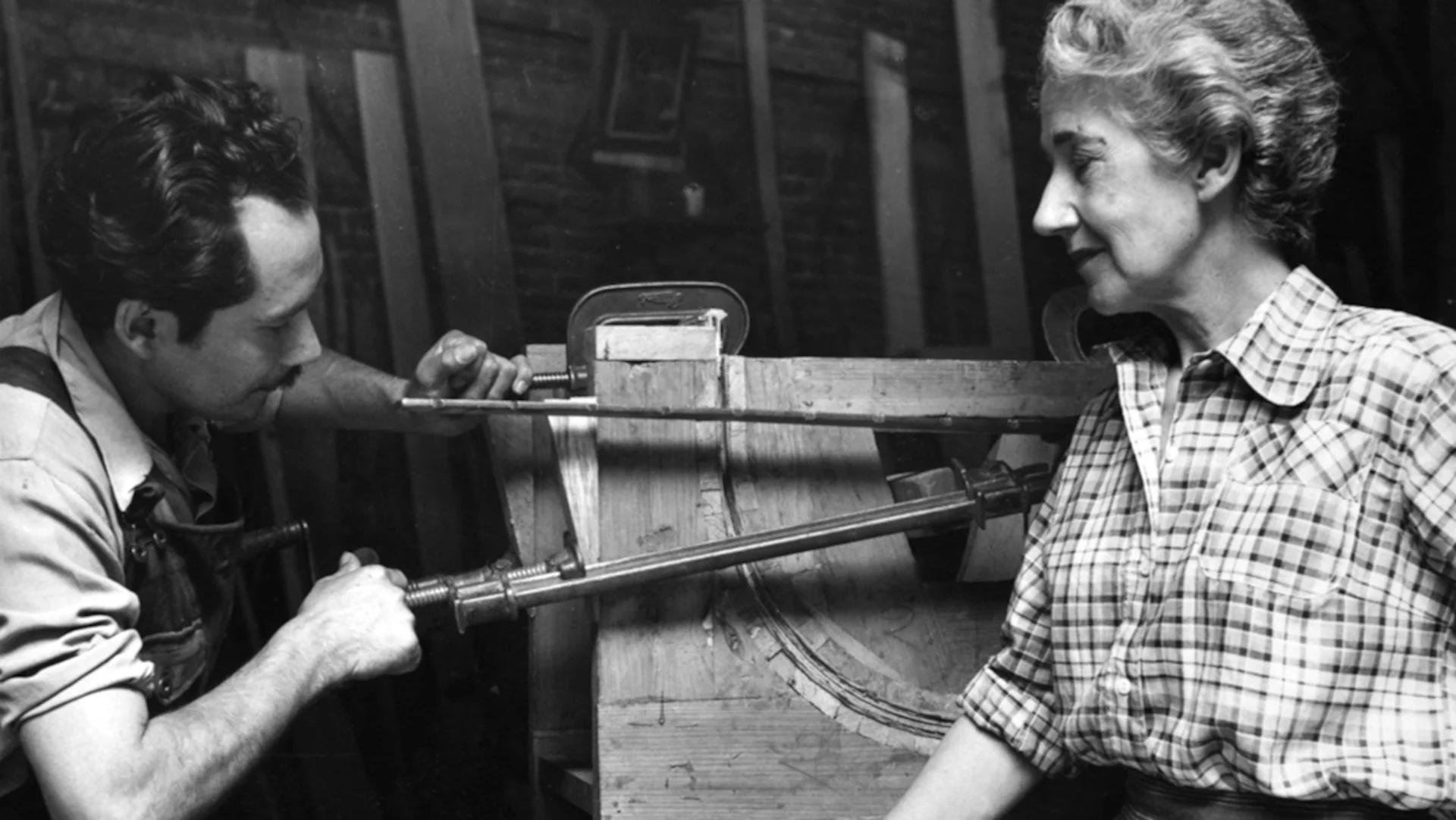SPOTLIGHT: AMERICA(S) NOVEMBER 24 2020
by Anna Carnick
The Guatemala City studio talks exploration, rediscovery, reckoning, and reconciliation

GUSTAVO QUINTANA AND ESTEFANIA DE ROS OF AGNES STUDIO
Photo courtesy of the designers
In the American Design Stories series, we ask designers from across the Americas to share their insights on American design today, along with three images that represent their vision of American design.
For this installment, we spoke with Gustavo Quintana and Estefanía de Ros of Agnes Studio in Guatemala City. The pair, partners in both life and in work, explore cultural symbols and heritage by reinterpreting and recontextualizing traditional crafts, materials, and techniques. The result is objects and spaces that blur the lines between design and art.
Design Miami/What makes your American story unique?
Gustavo Quintana & Estefania de Ros/Our story is in some ways very similar to those of other designers coming out of Latin America. We find ourselves in a dichotomy between being influenced both by “outside” cultures that have a strong modern design history and by our own very rich cultural heritage. The latter ranges from pre-Columbian cultures and societies—in our specific case, the Maya—to the colonial eras and the consequent waves of migration that built this layered Latino culture. That culture is, in some aspects, very similar across Latin America, but at the same time, there are very particular nuances from country to country.
In Guatemala, the modern design scene is in its early stages. So you are presented with an opportunity to create and define new languages that draw from the richness of your culture and environment, but with complete freedom to forge as many futures as you can envision. We’re not constrained by rules or a particular design DNA; it’s a blank canvas.
For our studio’s own, specific story, the starting point was a hypothesis of an alternate reality in which we questioned how design would have evolved in Latin America without the interference of European colonialism. That question opened the door for us to explore new ideas while respecting our heritage. It helped us move forward with a design language we wanted to explore and consequently evolve, with a mix of modern day ideation tools and traditional craftsmanship and materials. And while it’s not the only theme we explore, we always refer to it either directly or subtly.

PRE-COLOMBIAN POTTERY (MAKER UNKNOWN), A SOURCE OF ENDLESS INSPIRATION FOR THE STUDIO
Photo courtesy of Agnes Studio.
DM/What does “America” mean to you?
GQ & EdR/Resilience, strength, hope, an overwhelming sense of awe, joy, and positivism. So far, we’ve never met another Latin American who does not believe in a brighter future.
DM/What does “American design” mean to you today?
GQ & EdR/Exploration, rediscovery—as well as reckoning and reconciliation. We imagine this moment feels something like the late 19th and early 20th centuries, when great minds coincided in Paris, and then that melting pot of ideas and innovation shifted to New York and Mexico City, where proponents of modern art and design mingled.
Because of our history, we didn’t get to enjoy that across Latin America at the same scale, but we feel like it’s happening now. And that’s exciting, not only from a personal perspective but also because of the impact that can happen on our current zeitgeist. Just look, for example, at what Latin American music has achieved in the last decade or so. Those seeds—whether in music, art, or design—were planted a long time ago by great, great artists and designers like Clara Porset, Luis Barragán, Carlos Mérida, and so forth. We’re really just witnessing them bloom.

CLARA PORSET WITH ALFONSO ROJAS
Photo © Elizabeth Timberman; Esther McCoy Papers; Archives of American Art Smithsonian Institution
DM/Does that notion of America or American design figure into your own work?
GQ & EdR/It’s imbued in everything we do. Coming from a small, barely known Central American country, we tend to have this mentality—and it’s not just us, it’s a cultural theme—that good things can, and often do, come from unexpected places.
When you have the opportunity to show the world a part not only of your personal essence, but also your roots, there’s almost a moral obligation to make sure that your work owns its Latin American origin.
DM/What is an example of the best of American design?
GQ & EdR/Mexico City. Its essence is so deeply rooted in heritage yet also innovation and forward-thinking. It’s an example for the rest of Latin America, and we say this with full respect for—and no intention to diminish—all the other amazing places across the continent. Mexico City’s vibrancy and excitement are just unique. You can feel its personality.
It’s hard to single out a particular example of the best of American design. We choose Mexico City because it is important to give credit to a place that fosters creativity in all of its forms and maintains its uniqueness while expanding its status as a creative hub—and nurturing and producing generation after generation of amazing designers.
DM/What is an example of the worst of American design?
GQ & EdR/Cultural appropriation. Which is not exclusively an American problem, but it lays at the base of the nascent design scenes across Latin America. It’s usually the first and most common approach to “modern Latin American design.” You have to be very careful not to fall into it—and to weed it out.

SIERRA DE LOS CUCHUMATANES IN GUATEMALA; THE EXTENSIVE MOUNTAIN RANGE IS A PLACE OF SOLACE AND INSPIRATION FOR THE STUDIO
Photo © Estefanía de Ros of Agnes Studio
DM/How have current crises figured into or impacted your studio’s experience and approach?
GQ & EdR/We’ve always operated in a semi-nomadic, remote-working, boot-strapped, skeleton-crew kind of way, so as a studio, operation-wise, thankfully nothing changed much.
But as humans, it’s had a major impact on our philosophy and approach. It has shaken us to the core, really. It has been a hard but rewarding lesson in what really matters most in life and consequently in our work. We’re thinking a lot about what we make and why we make it.
DM/Do you have a personal mantra?
GQ & EdR/Be present.
DM/Thank you, Gustavo and Estefanía! ◆
Agnes Studio’s collectible design work is represented byAGO Projects.
Inspired by the 2020 Design Miami/ Podium theme America(s)—and all the complexities that go along with it, especially in this moment—Anna Carnick and Wava Carpenter ofAnava Projectsconnected with a selection of outstanding designers with personal ties to the Americas to get their take on “American” design today. Their responses were insightful, inspiring, and diverse: From thoughts on the most pressing issues and challenges facing designers now, to hopes and suggestions for a more equitable future, and reflections on their own American design journeys to date. Each story is accompanied by images provided by the designer that embody what America(s) or American design means to them.